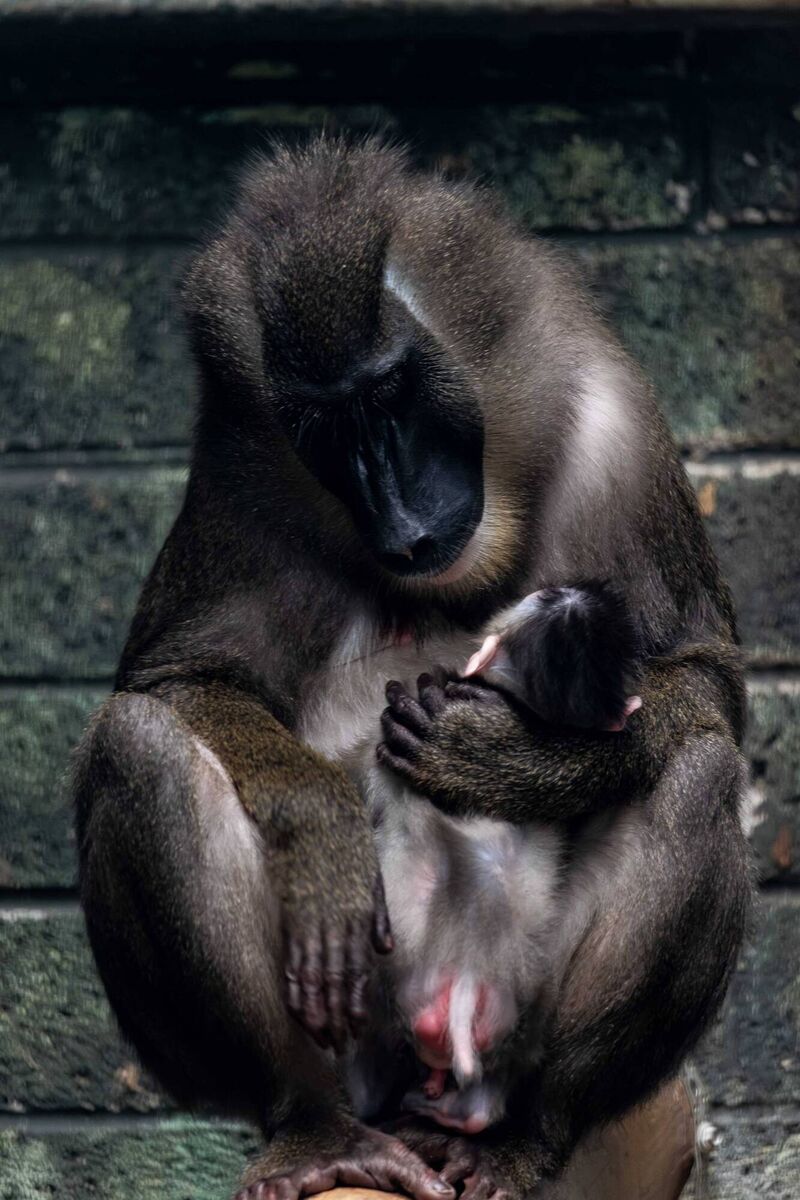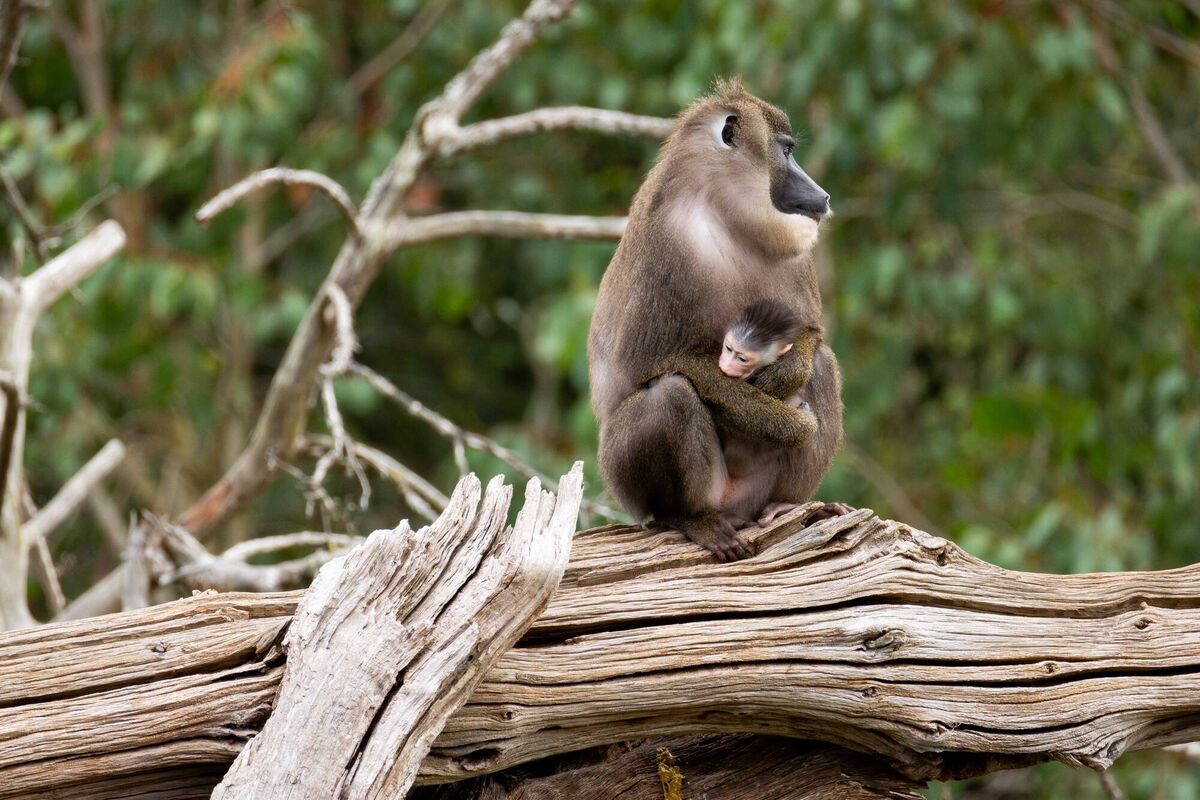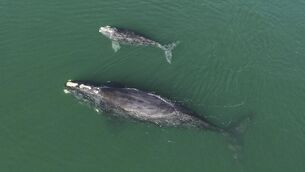First look: Endangered baby drill monkey born at Fota Wildlife Park

The baby male drill born on July 18 at Fota Wildlife Park. The young male is the offspring of nine-year-old mother Lewa and 10-year-old father Ekona. Picture: Michael O'Sullivan / OSM PHOTO.
Fota Wildlife Park has announced the birth of the first endangered baby drill monkey born at the Cork conservation centre.
The endangered male drill monkey (Mandrillus leucophaeus) was born on July 18, the first of its species born at the park as part of the European Endangered Breeding Programme (EEP).
The young drill is the offspring of nine-year-old mother Lewa and 10-year-old father Ekona.
Drills are a rare primate species closely related to mandrills, and over the past 30 years, the populations of drills have declined by at least 50%.
In the wild, they are found only in a limited range in Cross River State in Nigeria, southwestern Cameroon, and Bioko Island in Equatorial Guinea.
Their total natural habitat covers less than 40,000 square kilometres, and there are an estimated 3,000- to 4,000 drills left in the wild, which is decreasing due to habitat loss to give way for development and plantations.

Lead ranger, Teresa Power, said: “We’re absolutely thrilled to announce the birth of this baby drill, it’s a first not only for Fota Wildlife Park but for Ireland as well. The drill is an incredibly rare and endangered species, so it’s a real privilege to be part of the conservation and care of the species.
“Lewa, the new mother, is doing an excellent job. She’s very protective, and the young male is nursing well, this is her first baby. For now, Lewa and the baby are being kept separate from the rest of the group, along with Banni, our younger female, who is both curious and attentive toward the new arrival.
“We’re hopeful that Banni may give birth herself later this year, and she’s already learning valuable maternal behaviours from observing Lewa. Visitors to Fota Wildlife Park may see the young monkey with his mother, at the purpose-built drill habitat and island.

“Drill infants are born with a distinctive black cap of hair, which they usually lose around six months of age. They’re quite precocious too — we often see them trying to wander off as early as two weeks old.
“Lewa, however, is quick to pull him back and keep him close. We plan to reunite the group once the baby is a little bigger and more independent.”
Fota Wildlife Park is asking the public to help name the young male monkey, and to enter their suggestion by visiting www.fotawildlife.ie/blogs/news, for the chance to win a year-long conservation annual pass to the park.






